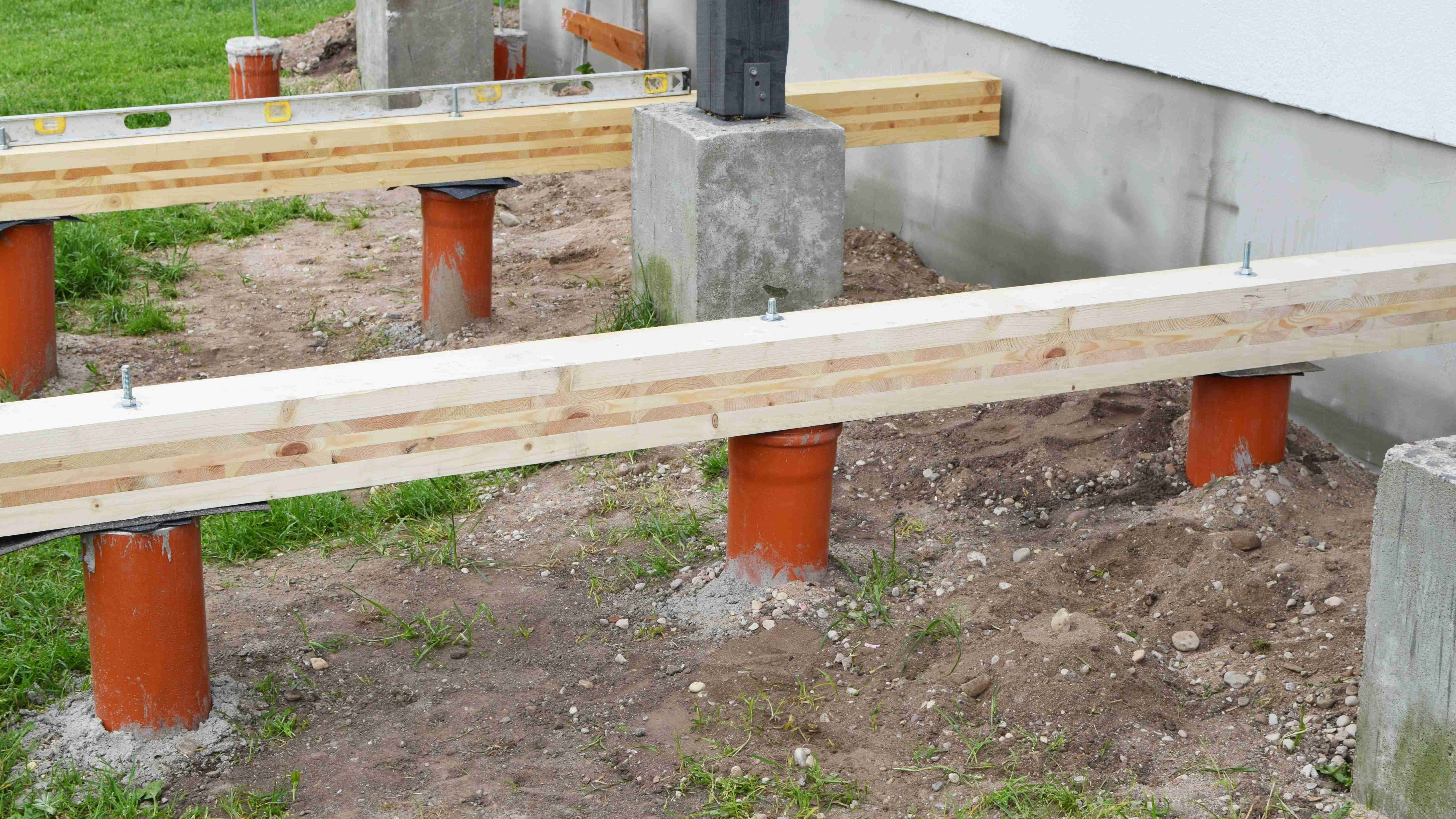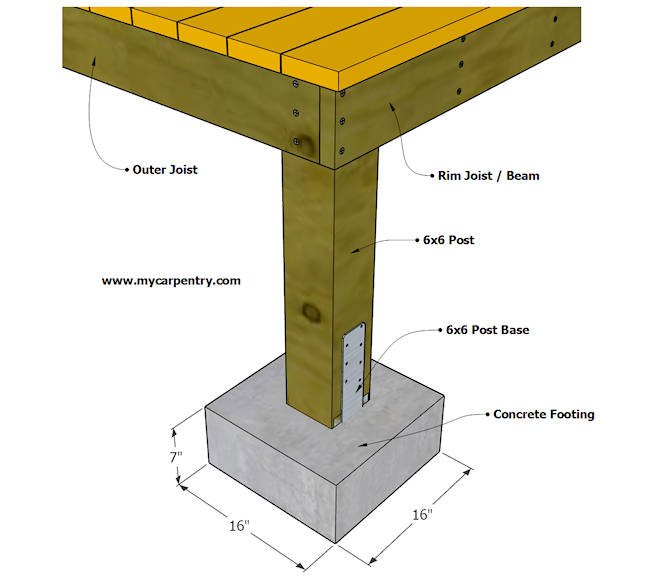Selecting the Right Deck Footings for Stability and Toughness
When it involves building a deck, one of one of the most important choices you will certainly make is selecting the right grounds for security and sturdiness. The long life and security of your deck depend heavily on the type of grounds you select, as they provide the important support and security to endure the examination of time. With a myriad of alternatives readily available, it can be overwhelming to establish which grounds are best suited for your particular demands. In this discussion, we will explore the different types of deck footings, take into consideration the essential variables to weigh when making a choice, and look into the benefits and drawbacks of various choices. By the end, you will have a clearer understanding of the choices at hand and be far better furnished to make an informed decision for your deck project.
Kinds of Deck Footings
These footings consist of a round opening filled with concrete, which supplies a strong structure for the deck articles. Concrete pier grounds are relatively very easy to set up and use exceptional security, making them a prominent selection for lots of deck jobs.
Another sort of footing is the helical stack footing. Helical stacks are steel shafts with helical plates connected to them. These footings are set up by screwing them right into the ground, which creates a secure foundation for the deck. Helical stack footings are optimal for areas with challenging dirt problems, as they can be mounted in almost any kind of dirt. If required., they also enable for simple change and progressing of the deck.
Conversely, some builders choose precast concrete grounds. These grounds are made of sturdy concrete and be available in various sizes and shapes to suit various deck layouts. Precast concrete grounds are practical to mount and give a secure base for the deck structure.
Ultimately, one more choice is the post-in-anchor footing system. This sort of ground involves driving a metal anchor into the ground and connecting it to the deck post. It provides flexibility in regards to positioning the deck articles and appropriates for decks with light-weight frameworks.
When selecting the right sort of deck footing, it is necessary to think about aspects such as soil conditions, deck load, and neighborhood building codes (Deck Footings). Consulting with an expert service provider or architectural engineer can assist make sure the ideal ground is picked for a risk-free and steady deck
Aspects to Take Into Consideration When Picking Footings
When selecting the appropriate grounds for a deck, it is vital to thoroughly think about various factors such as dirt problems, deck tons, and adherence to neighborhood building ordinance. These factors play a significant function in ensuring the stability and sturdiness of the deck structure.
The type of soil on which the deck will be built determines the type of footings required. On the various other hand, decks built on clay or expansive dirts might call for footings that can fit the dirt's propensity to broaden and agreement.
One more essential aspect is the deck tons. The weight of the deck, including the materials utilized and any kind of possible real-time loads such as furnishings or celebrations, should be considered when picking footings. The grounds have to be developed to bear the weight of the deck and distribute it equally to protect against any kind of architectural issues or failures.
Last but not least, adherence to neighborhood structure codes is vital. Building codes differ from area to area, and it is important to adhere to the details demands set by the regional authorities. Deck Footings. These codes guarantee that the deck is constructed securely and satisfies the essential standards for architectural honesty and load-bearing capability
Concrete Grounds: Benefits And Drawbacks

When used as the foundation for a deck,Concrete footings provide numerous benefits and negative aspects. On the silver lining, concrete grounds supply superb stability and durability. Concrete is a rigid and strong material that can support heavy loads and hold up against different climate problems. It also has a long life expectancy, making it a reputable option for long-term usage.
Another benefit of concrete grounds is their versatility. They can be poured right into various forms and sizes to accommodate various deck styles and setups. Concrete footings can be personalized to fit the details requirements and needs of the deck structure.
Nonetheless, there are additionally some downsides to making use of concrete footings. This can increase the general expense of the deck task and might need specialist aid.

Helical Piers Vs. Sonotubes: Which Is Better?
In considering the foundation options for a deck, the comparison between helical piers and sonotubes is critical in establishing the exceptional option. They are twisted into the ground making use of hydraulic machinery, giving a steady and sturdy structure for the deck.
When it involves stability and resilience, helical piers have the upper hand. The helical plates on the piers create a strong hold with the dirt, avoiding any kind of motion or moving of the deck. This is especially helpful in locations with unpredictable or shifting soil problems. Sonotubes, on the various other hand, rely entirely on the concrete filling for stability, which might not provide the very same degree of strength and resistance.
In terms of installation, helical piers are relatively easier and faster to install compared to sonotubes. The hydraulic machinery made use of to turn the piers right into the ground makes sure a effective and fast process. Sonotubes, on the various other hand, call for digging openings and pouring concrete, which can be time-consuming and discover this labor-intensive.
Furthermore, helical piers are a more versatile option. If needed, they can be used in numerous soil conditions and can be readjusted or enhanced. Sonotubes, on the other hand, may require additional assistance, such as rebar, in particular dirt conditions or areas with high lots needs.
Selecting the Right Footings for Your Deck's Dimensions
For optimum architectural stability, it is important to carefully choose the suitable grounds that line up with the dimensions of your deck. The measurements of your deck, including its width, elevation, and length, play a significant function in establishing the type and size of footings needed.
When picking grounds for your deck, it is crucial to think about the load-bearing capability of the soil. The weight of the deck, combined with the weight of any furnishings or individuals on it, applies a significant force on the footings (Deck Footings). As a result, it is vital to select grounds that can appropriately support this weight more tips here without changing or sinking gradually.
The shapes and size of the grounds must likewise be considered. Bigger decks with higher dimensions require larger grounds to provide enough stability and assistance. The form of the grounds, whether they are rounded or square, relies on the design and format of the deck. Additionally, the deepness at which the footings are set up ought to be figured out based on the frost line in your region to avoid any type of heaving or shifting because of freezing temperature levels.
Conclusion
In final thought, picking the ideal deck footings is critical for making sure security and longevity. Aspects such as the kind of grounds, the deck's dimensions, and the advantages and disadvantages of different choices must be thought about. Concrete footings supply stamina and durability, however may be more lengthy and pricey to install. Helical piers and sonotubes have their very own benefits and negative aspects. Inevitably, selecting the suitable footings for your deck's certain needs is crucial for a long-lasting and successful framework.
These grounds consist of a cylindrical hole filled up with concrete, which gives a solid structure for the deck blog posts. Concrete pier grounds are reasonably very easy to set up and use superb security, making them a popular choice for lots of deck jobs.
Precast concrete footings are hassle-free to install and give a secure base for the deck framework.
It provides versatility in terms of positioning the deck articles and is suitable for decks with light-weight structures.
Concrete grounds offer a number of advantages and drawbacks when made use of as the foundation for a deck.